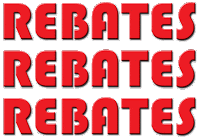The Dance of Onboarding: Integrating New Hires into Your Corporate Culture
who couldn't match your rhythm or didn't know the steps? It can become a clash of styles or cultures, or, worse—somebody gets their toes stepped on. A similar thing can happen when a new hire doesn't quite 'get' the culture. Much like dancing, though, skills can be learned.
I recently facilitated a panel on Cultural Quotient (CQ) where we discussed best practices for increasing CQ. This involved intentional learning, self-awareness of physical cues such as body language and personal space, and the willingness to adapt to new cultures. I have some amusing stories about what not to do based on experiences with insensitive former colleagues. However, it's more productive to focus on how employers can improve the onboarding experience and subsequently enhance retention and employee engagement by welcoming people into their corporate culture. Maybe someday in person, over drinks, I'll share a funny story or two.
Let’s start with the same mind-body-spirit learning our panelists discussed but focus on the organization instead of the individual.
Mind: Educating and Informing Your New Hires
"What learning tools do you provide your new hires? An introduction to the corporate culture and leadership principles is a good start. Meetings with colleagues in similar roles, as well as those in different roles with whom they might collaborate in the future, are also beneficial. One best practice I’ve recently experienced is not only learning about people’s roles but also learning about them as individuals. Here’s a great example: you discover that you and your dotted-line supervisor both love hiking, off-road biking, and the great outdoors. That immediately creates a more collegial relationship and environment. Your common interests set the tone for future collaboration."
To help your new hire adjust, consider sharing the following information:
- Commonly used acronyms and their meanings
- Everyday processes and practices
- Organizational charts
- A list of commonly used apps or tools and their purposes
- An employee handbook
Body: Creating a Welcoming Physical Environment
The type of workspace and equipment you provide sends a strong message to a new hire. If you give them a worn-out laptop, it conveys a certain impression. Similarly, it also sends a message if you don't have a well-maintained physical workspace for them, especially if they're not working remotely. Making your new hire work out of the conference room or café sends the wrong message. Ideally, all necessary tools such as a laptop, desk, or company vehicle should be ready. Additionally, ensure all required forms for the payroll department and government are prepared. It's also a nice gesture to provide company gear such as a backpack, insulated mug, and fleece, allowing them to proudly represent the company from day one.
If you have common internal or external cultural practices, openly communicate about them and ask your new co-worker how they feel. For example, in parts of Europe, it is normal to greet a female co-worker with a kiss on the cheek. I'll always remember a colleague who had traveled extensively internationally and actually asked me if it was okay before kissing me hello on the cheek. That simple courtesy went a long way in building a mutually beneficial working relationship and mutual respect.
Spirit: Cultivating a Positive Emotional Experience
The last thing you want in a new employee is buyer’s remorse. According to a recent Gallup poll, only 29% of new hires felt that their new employer's onboarding process set them up for success. To address this concern, many smart organizations assign a mentor or onboarding buddy. This adds a personal touch to the process and provides a developmental opportunity for both the mentor and the mentee, especially if the mentor is a peer. Scheduling check-ins every 30 days for the first 90-120 days also shows an interest in the new hire’s success and helps keep things on track.
You can also create bonding rituals. This could be a welcome dinner, a boot camp, a site visit, a factory tour, or even job shadowing. These activities help new hires learn about the company culture and start to embody the best of what makes your organization unique and special. Making people feel welcome, sharing your culture with them, demonstrating empathy for the new hire, and having a plan to acculturate them pays dividends. It’s not just individuals that need CQ; organizations need it, too.
The US Air Force has a comprehensive program for new civilian employees to ensure they understand the Vision, Mission, and Values of that esteemed organization. This goes a long way toward facilitating civilian integration with the military, not an easy task.
Like all relationships, it takes two to tango—in this case, the new hire and the organization. Your organization, whether large or small, can take steps to ensure your new hire is integrated into the team. The examples shared will help. The rest is up to your new hire. Good luck and enjoy the dance!
Desirée Grace is a coach, advisor, consultant, and mentor with 30+ years as a senior leader in the electrical distribution and manufacturing sectors. She builds brands, grows revenue and motivates teams, facilitates strategy and execution, and offers special expertise in helping offshore companies enter the North American market. An experienced professional who enables win-win outcomes for organizations and their partners, find her on LinkedIn at www.linkedin.com/in/desireecgrace.
...






Comments